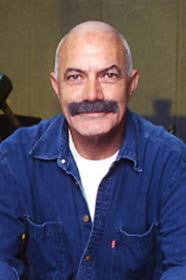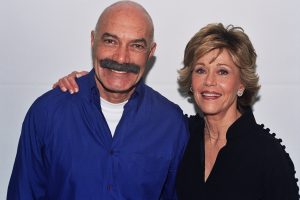Far from being the definitive Western it was meant to be, “How the West Was Won” is mostly notable for its sheer size, lengthy running time (162 minutes), fine locations and photography, and some exciting action sequences.
However, the film lacks dramatic conviction, intriguing characters, the epic scale it sought to achieve, and also suffers from sluggish pacing.
Three of Hollywood’s most renowned directors, Henry Hathaway, John Ford, and George Marshall, worked in close coordination, sharing the task of making the first feature using the Cinerama process. They were assisted by four top cinematographers, a cast of 24 stars, and a roster of over 50 actors and stunt men.
The script, credited to James Webb, was a compendium of just about every clich seen in Western movies. Built on familiar plots and situations, the saga features well-known stars, but unfortunately they only give the West a deja vu quality. The acting of the all-star cast is too perfunctory, the scenario too diffuse, the spectacle too contrived to register emotionally.
Thematically, the film unfolds as a sprawling tale of three generations of a pioneer family between the 1830s and 1890. Specifically, there are five interrelated episodes in telling the story of a half-century of America’s westward expansion, seen through the eyes of multiple generations of one pioneer family. The yarn ends in present-day America, with aerial shots of L.A. freeways, and the problems of coping with the present, as an illustration of the inevitable progress and the price it takes to achieve that.
The movie consists of five segments, three directed by Henry Hathaway (“The Rivers”, “The Plains” and “The Outlaws”), and one each by John Ford(“The Civil War”) and George Marshall (“The Railroad”), with transitional sequences by the Richard Thorpe (uncredited).
The screenplay was written by John Gay (uncredited) and James R. Webb. Popular western author Louis L’Amour wrote a novelization of the script.
The Rivers (1840)
Zebulon Prescott (Karl Malden) and his family set out West for the frontier via the Erie Canal. During the journey, they meet mountain man Linus Rawlings (James Stewart) who is traveling East to Pittsburgh to trade his furs. He and Zebulon’s daughter Eve (Carroll Baker) are attracted to each other, but Linus is not ready to settle down.
Linus stops at an isolated trading post run by a bunch of pirates headed by “Alabama Colonel” Hawkins (Walter Brennan). Linus is betrayed when he accompanies Dora Hawkins (Brigid Bazlen) into a cave to see a “varmint.” She stabs him and pushes him into a deep hole, but he is not seriously wounded. The bushwhacking thieves, including Dora, are then dispatched.
After burning the thieves in a massive funeral, the settlers continue down the river, but their raft is caught in rapids and Zebulon and his wife Rebecca (Agnes Moorehead) are drowned. Linus decides to marry Eve, who insists on homesteading where her parents had died.
The Plains (1850s)
Eve’s sister Lilith (Debbie Reynolds) goes to St. Louis, where she performs in a dance hall. Soon, she attracts the attention of professional gambler Cleve Van Valen (Gregory Peck). Learning that she has inherited a California gold mine, and to avoid paying gambling debts, Cleve joins her wagon train. He and wagon master Roger Morgan (Robert Preston) court Lilith, but she rejects both, to the dismay of friend and fellow traveler, Agatha Clegg (Thelma Ritter), who is searching for a husband.
Surviving the Cheyenne Indians attack, Lilith and Cleve arrive at the mine, only to find that it is worthless. Cleve leaves, and Lilith returns to a dance hall in a camp town. Lilith sings in the saloon of a riverboat, and when Cleve hears her voice, he leaves the poker game and proposes to her. He gets her agreement, by promising opportunities in the then rapidly growing San Francisco.
The Civil War (1861–1865)
Linus joins the Union army as a captain, and despite Eve’s wishes, their son Zeb (George Peppard) enlists as well, looking for an escape from farming. Corporal Peterson (Andy Devine) assures them that Civil War won’t last long. The Battle of Shiloh proves bloody, and Linus dies. The disillusioned Zeb befriends a Confederate (Russ Tamblyn) and the two decided to desert.
During a private conversation between Generals Ulysses S. Grant (Harry Morgan) and William Tecumseh Sherman(John Wayne), the rebel tries to shoot his two enemies, forcing Zeb to kill him. Zeb rejoins the army, and when the war ends, he returns home. His mother, learning that Linus had been killed, dies. Zeb gives his share of the family farm to his brother, who is more committed to the land, and leaves.
The Railroad (1868)
Following the riders from the Pony Express and the construction of the transcontinental telegraph line in the late 1860s, two competing railroad lines, the Central Pacific Railroad and the Union Pacific Railroad, one building Westward and the other Eastward, open up new territory. A lieutenant in the U.S. cavalry, Zeb tries to maintain peace with the Indians, assisted by the grizzled buffalo hunter Jethro Stuart (Henry Fonda), Linus’s old friend. When the ruthless Mike King (Richard Widmark) violates treaties and build on Indian territory, the Indians retaliate by stampeding buffalo through his camp, killing women and children. Zeb resigns and heads to Arizona.
The Outlaws (1880s)
In San Francisco, the widowed Lilith auctions off her possessions after spending money to pay her debts. She travels to Arizona, inviting Zeb and his family to oversee her ranch. Zeb, his wife Julie (Carolyn Jones) and their children meet Lilith at Gold City’s train station. Zeb runs into his old enemy, the outlaw Charlie Gant (Eli Wallach); Zeb had killed Gant’s brother in a gunfight. When Gant threatens Zeb and his family, Zeb turns to Gold City’s marshal, Lou Ramsey (Lee J. Cobb), but Ramsey can’t help.
Suspecting Gant of planning to rob a gold shipment transported by train, he prepares an ambush with Ramsey’s reluctant help. Gant and his gang are killed in the shootout. In the end, Lilith and the Rawlings family travel to their new home.
A short epilogue shows modern Los Angeles and San Francisco in the 1960s, including the famous four-level downtown freeway interchange and the Golden Gate Bridge, indicating the growth of the West in 80 years.
The divergent styles of the three directors’ divergent made the saga all the more shapeless. For instance, the Ford sequences changed the mood of the film from light adventure to elegy and even nostalgia.
The characters played by Debbie Reynolds and George Peppard bear the main burden in carrying the picture throughout its excessive duration. John Wayne played General Sherman in the Civil War sequence, but his footage was limited. As the grizzled buffalo hunter Jethro Stuart, Henry Fonda appears with flowing hair and moustache, which makes him unrecognizable, and his role, like many of the other ones, was poorly cut.
Even a generous and undiscriminating critic such as Bosley Crowther of the N.Y. Times found the film to be a patchwork of Western clichs, with no imagination, no pictorial style, full of random horribly written episodes. Other critics suggested to retitle the film as “How the West Was Done–To Death.”
Nonetheless, viewers went to see the novelty of Cinerama and the attractive imagery, which was never been done like that before. Cinerama is enormous and overwhelming and people were willingly to pay more for their tickets.
Current Status
In 1997, How the West Was Won was selected for preservation in the National Film Registry by the Library of Congress as being “culturally, historically, or aesthetically significant”.
Oscar Nominations: 8
Picture, produced by Bernard Smith
Story and Screenplay (Original): James R. Webb
Cinematography: William H. Daniels, Milton Krasner, Charles Lang, Jr. and Joseph LaShelle
Art Direction-Set Decoration (color): George W. Davis, William Ferrari, and Addison Hehr; Henry Grace, Don Greenwood, Jr. and Jack Mills
Music Score (Original): Alfred Newman and Ken Darby
Sound: Franklin E. Milton
Film Editing: Harold F. Kress
Costumes (color): Walter Plunkett
Oscar Awards: 3
Story and Screenplay
Sound
Film Editing
Oscar Context
“Tom Jones” is the first allBritish film to win the Best Picture Oscar since Olivier’s “Hamlet,” in 1948. It’s also the only film in the Academy’s annals to have nominated three Supporting Actresses.
Artistically, “Tom Jones” was superior to all the other nominees in 1963: Kazan’s personal drama, “America, America;” Mankiewicz’s problematic “Cleopatra,” which almost sank Fox; Ford’s tired and old-fashioned anthology, “How the West Was Won;” and “Lilies of the Field,” which won Sidney Poitier the Best Picture, thus depriving Finney of the honor. “Cleopatra” won the Cinematography, Art Direction, and Costume Design Oscars.
Cast
Narrator (Spencer Tracy)
Eve Prescott (Carroll Baker)
Lou Ramsey (Lee J. Cobb)
Jethro Stuart (Henry Fonda)
Zebulon Prescott (Karl Malden)
Cleve Van Valen (Gregoy Peck)
Zeb Rawlings (George Peppard)
Roger Morgan (Robert Preston)
Lilith Prescott (Debbie Reynolds)
Linus Rawlings (James Stewart)
General Sherman (John Wayne)










